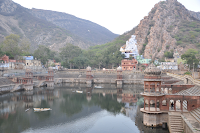 As an IT journalist, for most part of my career, I had almost nothing to do with the film industry people. Most actors and actresses are tech-ignorants, though of late they have started opening blogs, Twitter and Facebook accounts. However, I strongly doubt how much the running of these accounts is done by themselves! That’s why in the late 1990s, I was pleasantly surprised when Dewang Mehta, then President of the software industry association, Nasscom, introduced me to Shammi Kapoor, describing the Kapoor stalwart as “tech-savvy Netholic”.
As an IT journalist, for most part of my career, I had almost nothing to do with the film industry people. Most actors and actresses are tech-ignorants, though of late they have started opening blogs, Twitter and Facebook accounts. However, I strongly doubt how much the running of these accounts is done by themselves! That’s why in the late 1990s, I was pleasantly surprised when Dewang Mehta, then President of the software industry association, Nasscom, introduced me to Shammi Kapoor, describing the Kapoor stalwart as “tech-savvy Netholic”.
That was the time of Nasscom’s annual software industry meet, and I had to spend almost a whole day with Shammi Kapoor.
It was 1998, and very few people had their own website . Shammiji explained to me how he created the site himself, and described his vision about putting interactive data about the whole Kapoor family into the site. He claimed that he used to spend about 8-10 hours everyday on updating the site, and the computer was situated next to his puja room. With remarkable ease he talked about Frontpage, Corel Web Designer and other Web apps and packages, and, believe me, it was not an actor’s gloss-over. Yahoo and Junglee.com were names that were making rounds at that time, and a fellow journalist asked Shammiji if he was planning to sue Yahoo, since he had made that expression famous. Shammi Kapoor just smiled, probably knowing better about the IPR laws better that the scribe.
In the evening before getting to the cab for going to the airport, Shammiji invited me to his house in Bombay, and said, “May be one day we can go beyond this website, and form an Internet company. Come over, we’ll discuss.”
We never met after that. I remembered his words when dotcom movement was sweeping the infotech industry, and the bust that purged the leeches. Dewang Mehta also departed prematurely a few years later, and Shammi Kapoor went off my radar.
May the tech-savvy Kapoor Rest In Peace.











